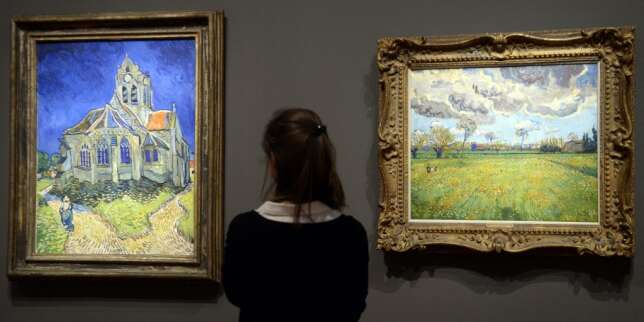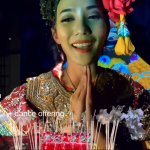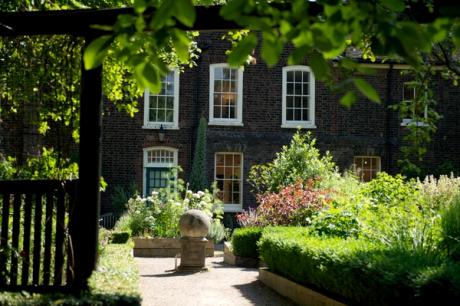torii series
- Photography (Photography)
Motoyuki Shitamichi
Motoyuki Shitamichi launched his Torii project in 2006. He proceeded to visit and photograph torii that are situated outside Japan’s current national border. Expansionist Japan constructed numerous torii during its occupation of the Northern Mariana Islands (now a U. S. territory), Northeast China (former Manchuria), Taiwan, South Korea, and Sakhalin (the eastern most area of Russia). Shitamichi ’ s work shows that, after World War II, the torii structures and their uses changed to suit local cultures and lifestyles in the respective countries. In Saipan, torii remain intact at cemeteries; those in South Korea have been destroyed and no longer exist. In Taichung City, a torii is laid on its side and used as a park bench. Many of the torii, which represent a symbolic shape in Shintoism, lost their significance. In this way, Shitamichi focuses on how symbolic shapes can be transformed into simple objects. Traditionally torii are considered as barriers (borders) to distinguish the sacred from the secular. In fact, Shitamichi’s torii project is synonymous with his discussions about borders. Torii located outside Japan’s national border look different depending on the historical view, political situation, and culture of respective countries. The difference is attributed not only to the regime and large events such as war, but also to the gradual change in people’s daily lives. As life continues, memories of large events gradually fade due to the accumulation of small events. The consecution of small events transforms the landscape before people realize it. The torii that Shitamichi focuses on in this series encompass the time series in terms of both large historical events and small personal events. He borrows the landscape to provide the audience with opportunities to contemplate upon the visible/invisible, existent/nonexistent borders. In general, the Japanese people are too sensitive or try to distance themselves from issues regarding the national border, territory, and state, because they are not accustomed to focusing on such issues. Shitamichi boldly takes up these issues and quietly upsets the concept of “Japan” or “the Japanese people.” His works reveal relative, fluid, and personal borders that are different from those created by political ideologies or historical objectivity.
After graduating from Musashino Art University in 2001, Shitamichi traveled for four years throughout Japan and took photographs of war remains. The photographs were published in his book Bunkers , published by Littlemore in 2005. Shitamichi feels strongly that seeing and feeling the actual thing is important, which allows him to explore the memory of scenery and to determine what fades away and what stays. He uses photographs, writings, diagrams and maps to illustrate the scenery through the aspects of archeology and presence. His work has been exhibited widely in Japan.
Colors:
Related works sharing similar palette

© » KADIST
Lucas Blalock
2011Compositions such as Tree on Keystone (2011) become hyperreal versions of their real-world equivalents...

© » KADIST
Eric Dizambourg
2010Like the film Le Mouton noir, this dimension is counterbalanced by a burlesque element...

© » KADIST
Nathaniel Dorsky
2010Dorsky’s pieces included in the Kadist Collection are small still photographs from twelve of his most important films...

© » KADIST
Bady Dalloul
2017The Great Game is a series of works composed of a number of card combinations illustrated by the faces of key political figures shaping the geopolitical landscape in the Middle East...

© » KADIST
Bakudapan Food Study Group
2018Mooi indie (which translates to “Beautiful Indies”) is a term used to depict the beauty of nature in the East Indies during the period of Dutch colonialism in Indonesia...

© » LE MONDE
Avec près de 800 000 visiteurs, l’exposition Van Gogh au Musée d’Orsay établit son record de fréquentation Cet article vous est offert Pour lire gratuitement cet article réservé aux abonnés, connectez-vous Se connecter Vous n'êtes pas inscrit sur Le Monde ? Inscrivez-vous gratuitement « L’Eglise d’Auvers-sur-Oise vue du chevet » et « Paysage sous un ciel tourmenté », peintures de l’artiste néerlandais Vincent Van Gogh présentées au Musée d’Orsay dans le cadre de l’exposition « Van Gogh/Artaud...

© » KQED
The 2024 Puppy Bowl: Team Fluff, Team Ruff Go Head-to-Head | KQED Skip to Nav Skip to Main Skip to Footer upper waypoint The Do List The 20th Annual Puppy Bowl Pits Team Fluff Against Team Ruff — and Everyone Wins Mark Kennedy, Associated Press Feb 7 Save Article Save Article Failed to save article Please try again Email Some of the adorable participants in this year's Puppy Bowl...

© » ARTS EQUATOR
Performance Making during a Pandemic: Of Innovation, Form and Embeddedness | ArtsEquator Thinking and Talking about Arts and Culture in Southeast Asia ArtsEquator Viewpoints Kornkarn Rungsawang September 29, 2021 By Adriana Nordin Manan (1,000 words, 3-minute read) If arts panel discussions are meant to reflect the times, “Critical Responses to Performance-Making in A Post-Pandemic World” positioned itself well: at this stage of the pandemic, it was less about open-ended contemplation of how the performing arts can retain vitality amidst the prohibitive circumstances, and more about sharing examples of performances that exemplify the act of moving ahead despite the barriers...

© » KADIST
A conversation between Curator Yina Jiménez Suriel and artist Duto Hardono, Thursday, October 12, 2023 Conversation, 5–6 pm, followed by a performance by Duto Hardono during the opening reception for de montañas submarinas el fuego hace islas , 6–8 pm Duto Hardono discusses his conceptual art practice that incorporates readymade materials such as everyday objects, old musical instruments, records, and cassette tapes with curator Yina Jiménez Suriel...

© » THEARTNEWSPER
East London's Vestry House Museum to undergo £4.5million redevelopment Art market Museums & heritage Exhibitions Books Podcasts Columns Technology Adventures with Van Gogh Search Search Museums & Heritage news East London's Vestry House Museum to undergo £4.5million redevelopment The funds to reimagine the museum are part of a wider £17.2m Levelling Up allocation that will help to bolster the district's arts credentials Alexander Morrison 18 December 2023 Share The Vestry House Museum today Courtesy of Vestry House Museum Tucked away in Walthamstow village, the Vestry House Museum has long been an important, if modest, archive of the east London district's history...

© » KADIST
Orion Shepherd
2010Ballad of the Unabomber Part I is a painting by Orion Shepherd that features several manila folders stacked in order according to their size, resting atop a grainy hardwood pattern...

© » ARTS EQUATOR
Weekly Picks: Indonesia (28 January - 3 February 2019) | ArtsEquator Thinking and Talking about Arts and Culture in Southeast Asia Weekly To Do January 28, 2019 Top Picks of Indonesia art events in Jakarta, Bandung and Surabaya from 28 January – 3 February 2019 Baron Basuning Studio, together with Galeri National Indonesia, invites you to NOOR, a solo exhibition of Baron Basuning’s works...

© » SLASH PARIS
L’œil vérité — Le musée au second degré — MAC VAL Musée d'art contemporain du Val-de-Marne — Exposition — Slash Paris Connexion Newsletter Twitter Facebook L’œil vérité — Le musée au second degré — MAC VAL Musée d'art contemporain du Val-de-Marne — Exposition — Slash Paris Français English Accueil Événements Artistes Lieux Magazine Vidéos Retour L’œil vérité — Le musée au second degré Exposition Techniques mixtes À venir Roman Cieslewicz, M...







